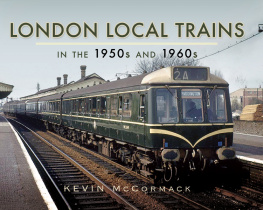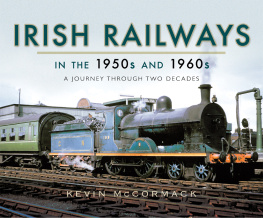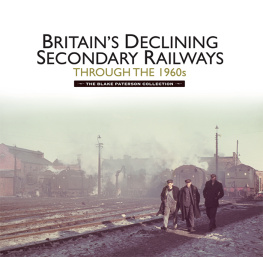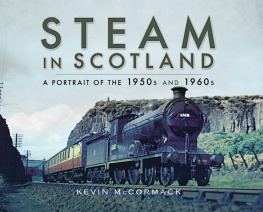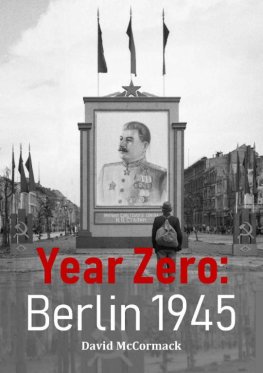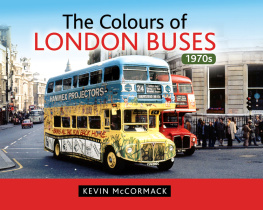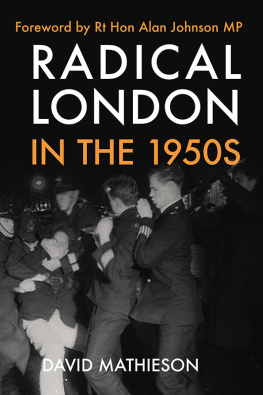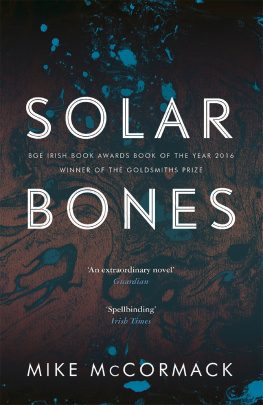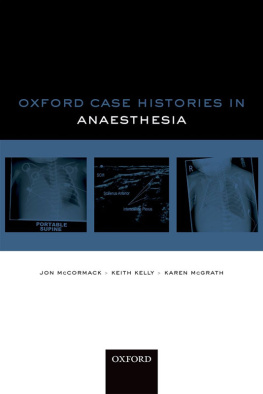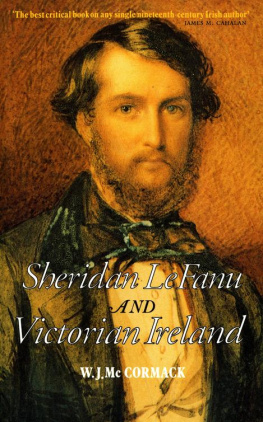McCormack Kevin - London Local Trains in the 1950s and 1960s
Here you can read online McCormack Kevin - London Local Trains in the 1950s and 1960s full text of the book (entire story) in english for free. Download pdf and epub, get meaning, cover and reviews about this ebook. year: 2016, publisher: Pen & Sword Books, genre: Non-fiction. Description of the work, (preface) as well as reviews are available. Best literature library LitArk.com created for fans of good reading and offers a wide selection of genres:
Romance novel
Science fiction
Adventure
Detective
Science
History
Home and family
Prose
Art
Politics
Computer
Non-fiction
Religion
Business
Children
Humor
Choose a favorite category and find really read worthwhile books. Enjoy immersion in the world of imagination, feel the emotions of the characters or learn something new for yourself, make an fascinating discovery.
- Book:London Local Trains in the 1950s and 1960s
- Author:
- Publisher:Pen & Sword Books
- Genre:
- Year:2016
- Rating:4 / 5
- Favourites:Add to favourites
- Your mark:
- 80
- 1
- 2
- 3
- 4
- 5
London Local Trains in the 1950s and 1960s: summary, description and annotation
We offer to read an annotation, description, summary or preface (depends on what the author of the book "London Local Trains in the 1950s and 1960s" wrote himself). If you haven't found the necessary information about the book — write in the comments, we will try to find it.
London Local Trains in the 1950s and 1960s — read online for free the complete book (whole text) full work
Below is the text of the book, divided by pages. System saving the place of the last page read, allows you to conveniently read the book "London Local Trains in the 1950s and 1960s" online for free, without having to search again every time where you left off. Put a bookmark, and you can go to the page where you finished reading at any time.
Font size:
Interval:
Bookmark:
First published in Great Britain in 2016 by
PEN & SWORD TRANSPORT
an imprint of
Pen & Sword Books Ltd,
47 Church Street,
Barnsley,
South Yorkshire,
S70 2AS
Copyright Kevin McCormack, 2016
A CIP record for this book is available from the British Library.
ISBN: 978 1 47382 721 9
PDF ISBN: 978 1 47386 799 4
EPUB ISBN: 978 1 47386 798 7
PRC ISBN: 978 1 47385 808 4
The right of McCormack, to be identified as the Author of this Work has been asserted by him in accordance with the Copyright, Designs and Patents Act 1988.
All rights reserved. No part of this book may be reproduced or transmitted in any form or by any means, electronic or mechanical including photocopying, recording or by any information storage and retrieval system, without permission from the Publisher in writing.
Printed and bound in India by Replika Press Pvt. Ltd.
Pen & Sword Books Ltd incorporates the Imprints of Pen & Sword Aviation,
Pen & Sword Maritime, Pen & Sword Military, Wharncliffe Local History,
Pen & Sword Select, Pen & Sword Military Classics and Leo Cooper.
For a complete list of Pen & Sword titles please contact
Pen & Sword Books Limited
47 Church Street, Barnsley, South Yorkshire, S70 2AS, England
E-mail:
Website: www.pen-and-sword.co.uk
Half Title page: Three years before electrification of the former LTSR, Standard class 4 tank No 80100 leaves Barking station with a train from Fenchurch Street in winter1957/8. In the background are the LT District Line tracks to Upminster. The locomotive now resides on the Bluebell Railway. (Julian Thompson/Online Transport Archive)
Front cover: The replacement of the local steam trains out of Paddington took the form of 3-car diesel multiple unit (DMU) sets built by the Pressed Steel Company in 1959-61 (subsequently BR class 117). Several of these DMUs have been preserved because they were highly successful and clocked up a remarkable working life of some forty years. This view at West Drayton depicts two 3-car sets headed by unit No 51349 in brand new condition. (Marcus Eavis/Online Transport Archive)
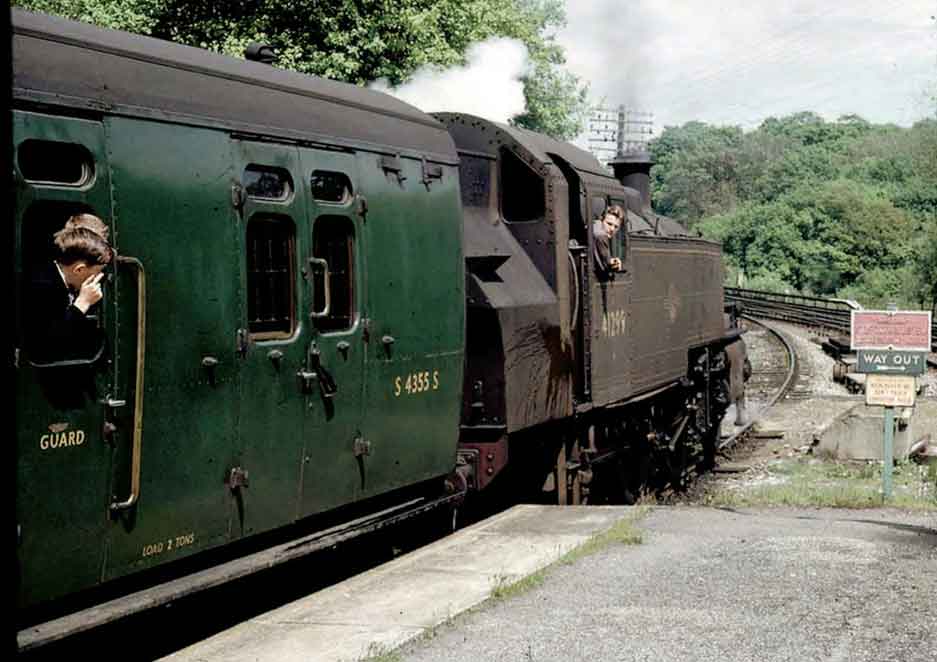
Boy seems to have problem with smuts in the eye as 2-6-2 tank No 41299 pulls out of Christs Hospital with a Horsham - Guildford train in May 1965. (Neil Davenport)
Contents
Introduction
This colour album of 1950s and 1960s images covers non-express trains working in and out of London termini, along with a selection of feeder services operating in roughly a 40 mile radius of the Capital. The trains featured are therefore semi-fast passenger, suburban passenger and freights. The advantage of casting the net beyond services in and out of London itself is to increase the variety of locomotive types and diesel/electric units featured, hopefully making the book more interesting to readers.
Conscious of the fact that much interest in this type of book is generated by railway modellers, I have endeavoured to use photographs with identifiable land marks, e.g. stations and signal boxes, wherever possible. Furthermore, every effort has been made to show material which has not been seen before in publications or on the Internet. However, it is perhaps worth mentioning that many railway photographers in the 1950s and 1960s travelled together so I cannot guarantee that occasionally an image very similar to one featured in this book has not been seen before. Also, since not all photographers were meticulous about their record of the trains they photographed, and in other cases preserved images taken by deceased photographers have been used with no information available, caption detail on individual workings is somewhat variable.
I make no apology for the fact that I am a steam enthusiast and therefore most of the pictures feature steam at work. I can raise some enthusiasm for vintage electrics, several of which are featured, but there is only a token representation of what I regard as more modern electrics and diesels, and definitely no unsightly yellow fronts!
The history of London services is a complicated one, not least because the railway companies were normally obliged for various reasons to site their London terminus initially on the outskirts of the City/West End until they were able to reach their preferred central locations. The first of Londons current termini was London Bridge which was officially opened on 14 December 1836, from where services operated by the London and Greenwich Railway ran for some four miles to Deptford. Indeed, the first part of the line, just two miles of it, had opened in February 1836. London Bridge has however been rebuilt several times since 1836 and is therefore unrecognisable from its original state.
The first mainline London terminus was Euston which opened on 20 July 1837 and in the following year the London and Birmingham Railway began operating services between the two cities. The original station was controversially demolished in 1961/2, together with the seventy foot high entrance Doric Arch, with just the two lodges on Euston Road remaining. The present airline terminal style building is scheduled for replacement as part of the proposed High Speed 2 development which should also see the reconstruction of the Arch, over sixty per cent of the original stone cladding having been retrieved from the bottom of a waterway (the Prescott Channel) in Bow.
The next oldest London terminus is Fenchurch Street station. This opened on 20 July 1841 when the London and Blackwall Railway extended westwards from its previous terminus at Minories. The present station building dates from 1853/4, just being pipped in terms of longevity of original buildings still recognisable today by Kings Cross. This station was opened by the Great Northern Railway on 14 October 1852, replacing the former terminus at Maiden Lane.
Jumping forward to 1863, the worlds first underground railway opened on 10 January of that year, with the Metropolitan Railway operating services over a 3.75 mile route between Paddington (Bishops Road) via Baker Street and Kings Cross to Farringdon Street. Five years later, Baker Street became a terminus following the inauguration of services to Swiss Cottage on 13 April 1868. This was the first section of the line which eventually extended some fifty miles from Baker Street to Verney Junction and which spawned new suburbs in its wake, known as Metroland.
To complete the picture, the remaining London termini opened as follows, albeit few with their original buildings/structures still intact today: Waterloo 1848 (replacing Nine Elms, opened in 1838), Paddington 1854 (replacing Bishops Road, opened in 1838), Victoria 1860, Charing Cross 1864, Cannon Street 1866, St Pancras 1868, Liverpool Street 1874 (replacing Shoreditch, opened in 1841), Blackfriars (St Pauls) 1886 and Marylebone 1899 (replacing Canfield Place, opened in 1893). Finally, the opening dates for two London termini which closed in the latter part of the twentieth century were Broad Street 1865 and Holborn Viaduct 1874. Services were withdrawn from these stations on 30 June 1986 and 29 January 1990 respectively.
The population of London was already increasing considerably when the railway era began and the new lines serving the Capital encouraged urban development which started to swallow up the outlying villages and fields. Although the first railway entered London on a viaduct, most carved their way through residential areas, forcing inhabitants to move, usually further out of London. As a form of compensation, some railway companies were obliged to provide cheap, workmens tickets.
The onset of electrification accelerated the growth of London suburbia. Electric tube trains were introduced in 1890 and electric trams quickly followed. The latter had a particular impact on the railway companies operating in the south of London whose answer to this competition was to electrify their surface suburban services, starting in 1909.
Next pageFont size:
Interval:
Bookmark:
Similar books «London Local Trains in the 1950s and 1960s»
Look at similar books to London Local Trains in the 1950s and 1960s. We have selected literature similar in name and meaning in the hope of providing readers with more options to find new, interesting, not yet read works.
Discussion, reviews of the book London Local Trains in the 1950s and 1960s and just readers' own opinions. Leave your comments, write what you think about the work, its meaning or the main characters. Specify what exactly you liked and what you didn't like, and why you think so.

